If you listen closely, you can hear a soft-spoken hipster in the corner of an artisanal coffee shop respond to an acquaintance telling them about the new vinyl record they just bought. “Oh, you’re still buying records from the store? Cute. I recently started cutting my own records at home with the new PO-80 Record Factory from Teenage Engineering.”
All joking aside, there’s nothing snooty about the PO-80 Record Factory and its process of creating vinyl records. Teenage Engineering makes you work for any results you get by requiring you completely assemble the unit, including connecting all the wires. This irresistibly designed product is a clash of passions, a wave of music enthusiasts on one side meeting together with technology enthusiasts on the other.
Be warned: This is not a pressing plant where you can cut Taylor Swift’s new album for distribution in Target. This is a novelty in almost every regard. It’s as much about learning about tech and music as it is listening to songs. It’s cool in pictures and, for $149, it’s cool in real life, too.
TL;DR
Pros:
- Clever concept for creating vinyl records at home
- Small and portable, powered by USB-A cable
Cons:
- Potentially challenging assembly process
- Lo-fi sound quality
Buy at SFMOMA.
What Is the Record Factory?
TYLER HAYES
Let’s start with the basics. The PO-80 Record Factory is a small record cutter that can make 5-inch vinyl records and play them back. The portable unit is low fidelity, and it’s not trying to be otherwise.
The Record Factory comes as a kit that you need to build yourself. The pieces are quite intricate, and the company recommends assembly for people 13 years and older. The instruction booklet looks like a traditional newsstand magazine. It starts off with an interview detailing the product’s inception and then fades into a dense step-by-step guide to assembling it.
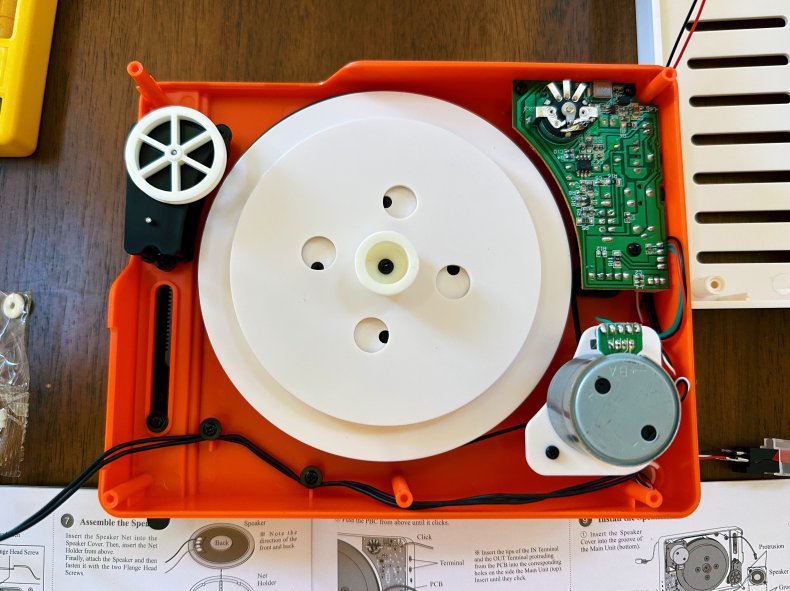
TYLER HAYES
My kit came with six plastic records, each with about 3 to 4 minutes of recording time per side, depending on whether you use 33 or 45 RPM. (Additional records are available in a 10-pack for $20.) Also included is a 3.5-millimeter audio cable, spare cutting needle and adapter for 7-inch records.
I made it through the assembly process, but it was definitely tricky. Or rather, it needed detailed attention—while I was eager to jump ahead and just start using it. In hindsight, the requirement for people to build the Record Factory allows them to become intimately familiar with the different pieces. If something went wrong later, I would feel more empowered to fiddle with the parts to try to fix it myself. That’s a unique feeling in today’s disposable-product landscape.
What Can the PO-80 Record Factory Do?
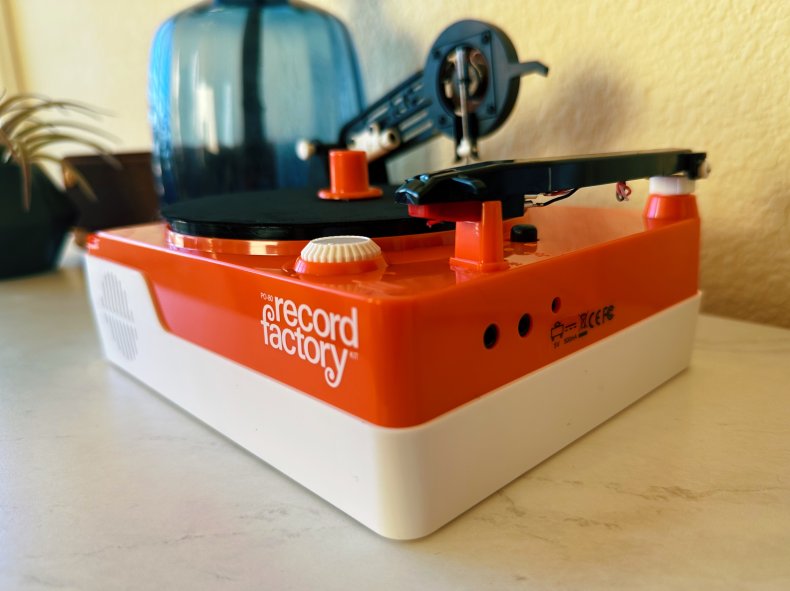
TYLER HAYES
If you’re looking at the PO-80 Record Factory straight on, the left side features the cutting needle and the right side houses the playback needle. In basic terms, the cutting process works by plugging in the 3.5-millimeter cable into a device with the audio you want to etch into the plastic. With the power on and the switch set to cut, the needle on the left starts on the outside and slowly moves inward.
Much like the assembly, cutting was a tricky process to get the hang of. It took me about two records, or four sides, to get a handle on how everything worked and the type of touch I should be using.
Burning through two out of six records doesn’t sound economical. That thought went through my mind, and it was part of my initial apprehension about using the product. I was trying to be perfect with each attempt. But after the first disc I began to loosen up and have fun with it. I reminded myself again that I was not cutting a major artist’s album here. This is truly an experience that is about the journey rather than the destination.
After several attempts, I got in a rhythm and was able to cut a few different tracks of spoken word from my kids. I also tried to use a song from artist Lyrah (with permission), but using traditional songs was less impressive.
What Does Your Own Vinyl Record Sound Like?
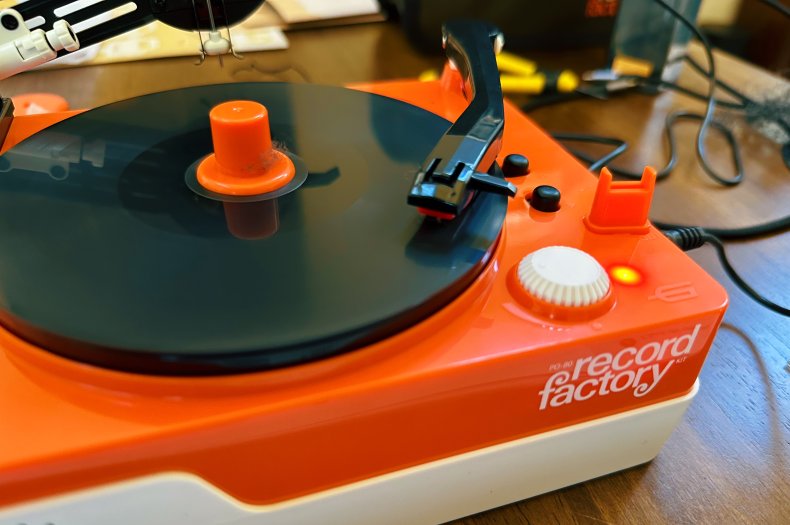
TYLER HAYES
Teenage Engineering mentions that the PO-80 Record Factory is decidedly lo-fi. Music will probably not sound the way you’re expecting, and it certainly won’t sound like a traditional vinyl record. I knew this going in so I wasn’t disappointed by the overall poor-quality results. The sounds are in line with the makeshift nature of the unit.
One way to improve the outcome is to use the company’s mastering tool. Upload a song and it will basically compress the audio in a couple of different genre styles. You can visit the site to hear samples and then imagine how that audio might be even worse coming out of a very tiny speaker.
Should You Buy the PO-80 Record Factory?
I have a sneaking suspicion that the Record Factory will either be a joy and a delight or a frustrating headache for people. I have a hard time imagining anything in between. That’s the nature of this beast.
If you can treat this as a learning experience and a journey, then dive in. The Record Factory is equivalent to a LEGO set for music enthusiasts. In this context, there’s nothing better. This is the definition of cool.
Buy at SFMOMA for $149.
Newsweek may earn a commission from links on this page, but we only recommend products we back. We participate in various affiliate marketing programs, which means we may get paid commissions on editorially chosen products purchased through our links to retailer sites.










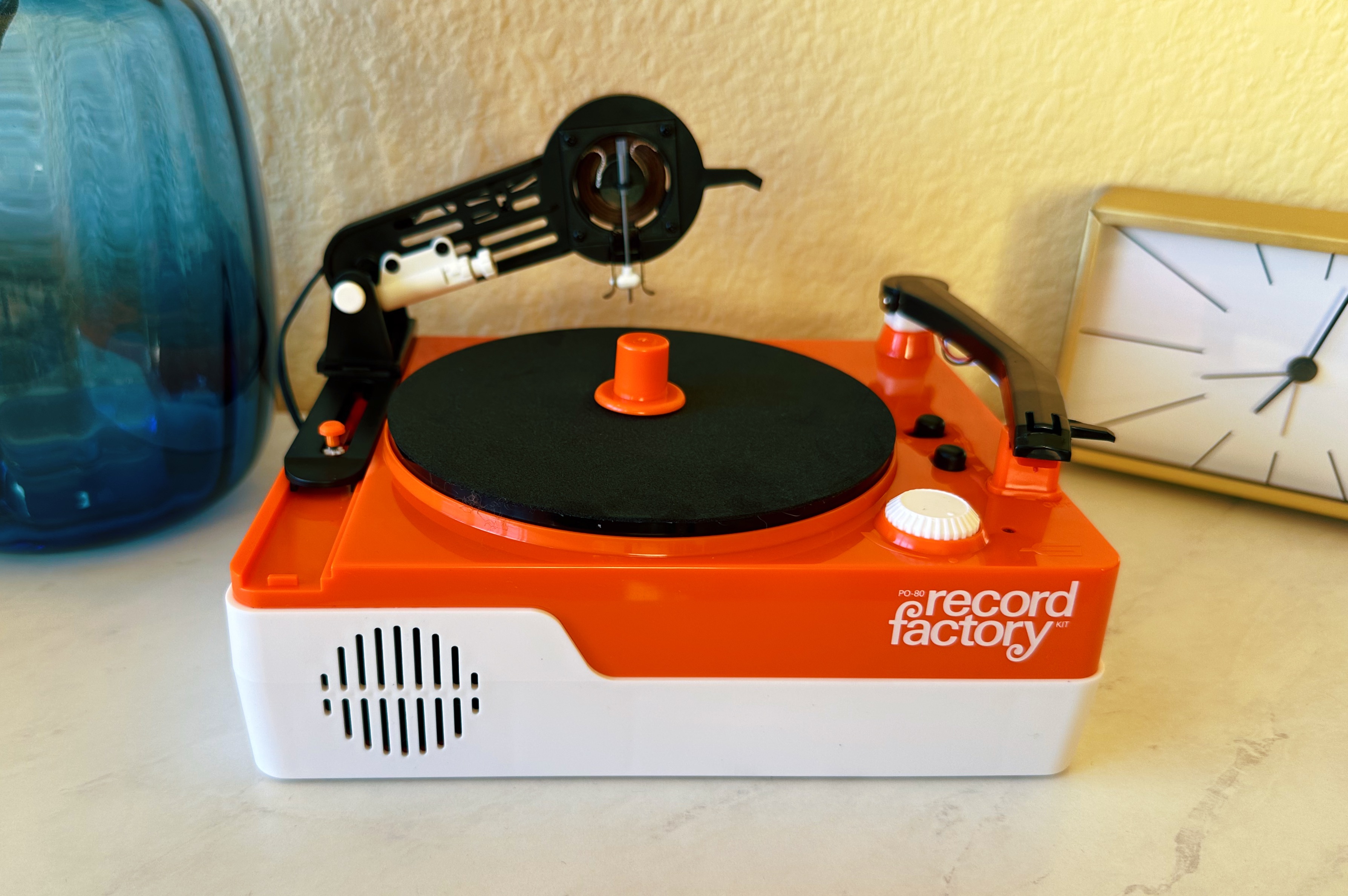
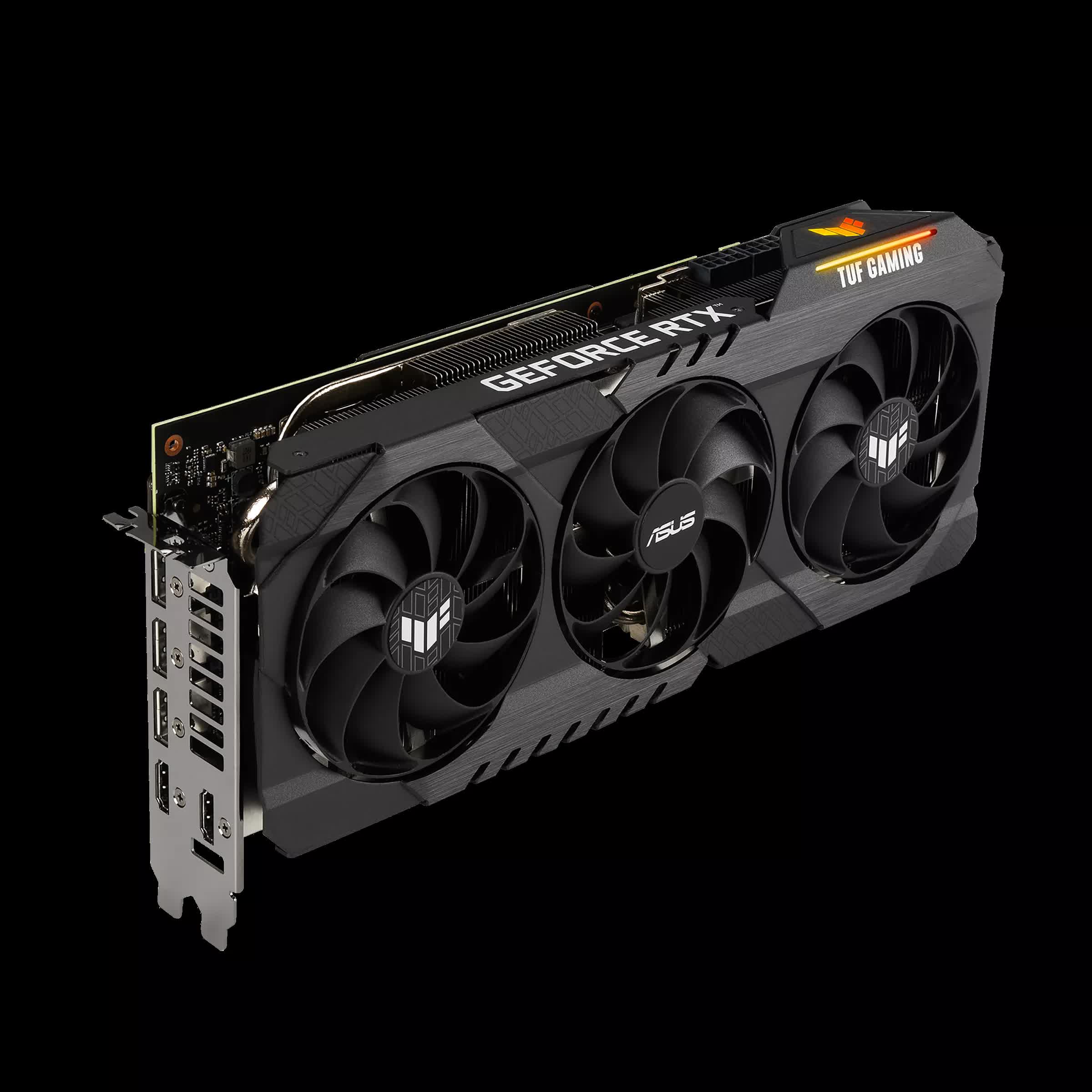





Discussion about this post